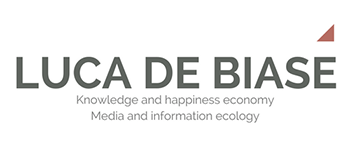Secondo Gartner, per il 2017, il 50 per cento delle soluzioni relative alla internet delle cose sarà generato da startup che avranno meno di tre anni: cioè appena nate o che stanno nascendo in queste settimane… (Ecco qui sotto il comunicato)
Gartner Says By 2017, 50 Per Cent of Internet of Things Solutions Will Originate in Start- Ups That Are Less Than Three Years Old
Analysts Explore Major Business and Technology Trends at Gartner Symposium/ITxpo 2014 in Orlando
Gartner’s Maverick Research Sparks New, Unconventional InsightsORLANDO, FL., October 9, 2014 — Makers and start-ups, not tech providers, consumer goods companies or enterprises, will drive acceptance, use and growth in the Internet of Things (IoT) through the creation of a multitude of niche applications, according to Gartner, Inc. Gartner predicts that by 2017, 50 per cent of IoT solutions (typically a product combined with a service) will originate in start-ups that are less than three years old.
Gartner defines “makers” as inventors, tinkerers and entrepreneurs who create and manufacture products using traditional tools and new digital design and rapid prototyping and manufacturing technologies. “Start-ups” are fledgling businesses that are often technology-focused and have the potential for high growth.
“Conventional wisdom is that the growth of the IoT is driven by large organisations. As is always the case, there is an element of truth in conventional wisdom and major consumer goods companies, utilities, manufacturers and other large enterprises are, indeed, developing IoT product offerings,” said Pete Basiliere, research vice president at Gartner. “However Gartner’s Maverick research finds that it is the makers and the start-ups who are the ones shaping the IoT. Individuals and small companies that span the globe are developing IoT solutions to real-world, often niche problems. They are taking advantage of low-cost electronics, traditional manufacturing and 3D printing tools, and open- and closed-source hardware and software to create IoT devices that improve processes and lives.”
Gartner’s Maverick research is designed to spark new, unconventional insights. Maverick research is unconstrained by Gartner’s typical broad consensus-formation process to deliver breakthrough, innovative and disruptive ideas from the company’s research incubator to help organisations get ahead of the mainstream and take advantage of trends and insights that could impact IT strategy and the wider organisation.
“Managers often assume the IoT is about business-to-business and business-to-consumer opportunities, relying on technologists within their enterprises to develop the necessary systems and connected items. However, these firms are slow-moving elephants that cannot react quickly to what is happening underneath their feet,” said Mr Basiliere. “Product development processes within most large enterprises are too ponderous and ROI-driven to produce anything but high-volume, lowest-common-denominator IoT objects. The result is the development of a low number of IoT uses that garner high amounts of revenue, while makers, start-ups and crowdsourcing efforts result in high numbers of low-revenue niche IoT applications.”
For this reason, senior management and emerging technology strategists within large organisations must transform their product discovery processes. Whether at consumer goods companies or in the healthcare, utilities, wireless, manufacturing or other vertical markets, managers must encourage makers within their organisations to develop IoT concepts. They must closely examine the output from these makers and check the feasibility of transferring the underlying ideas into their own organisations.
“Innovation is necessary for an organisation to sustain value over time and create competitive advantage. Yet in many organisations, the corporate culture and processes stagnate and harden, discouraging innovation as a result,” said Mr Basiliere. “In the meantime, makers and start-ups worldwide are charging ahead with identifying numerous, often niche problems and innovating solutions using IoT concepts. They will drive not only consumer and enterprise acceptance of the IoT, but also the creative solutions that organisations could not possibly discern, resulting in an “Internet of Very Different Things.”
Mr Basiliere cited the example of entrepreneurs and individuals who are leveraging the low-cost Arduino open-source electronics platform, entry-level 3D printers, and traditional woodworking and machine tools to build their own IoT devices. Gartner has found that these grassroots projects focus on managing and controlling devices in the home and are more focused on providing convenience (such as turning on the heat before you arrive home) than cost savings (the focus of enterprise-sector and public-sector IoT).
Similar to other technology advances historically, the growth promise associated with the early stages of IoT will lead to the creation and funding of a large number of start-up organisations that will manoeuvre to capture what they perceive to be early opportunities or overlooked product niches. This will lead to creative solutions and a wide range of products, many of which will fail in the market. Nevertheless, the process will lead to growth as the successful solutions are often consolidated by larger suppliers, and the overall market expands. As a result, makers enable people in underserved and niche markets worldwide — people who would not otherwise encounter the IoT offerings of large businesses — to experience and benefit from connected device.
“It won’t all be smooth sailing. Certainly there is no small number of factors working against makers and start-ups, whether they have an IoT offering or a more traditional product or service,” said Mr Basiliere. “Most small businesses fail within five years, and many of the ‘successful’ ones will be lifestyle companies that barely generate enough revenue to support an individual or family.”






[…] http://blog.debiase.com/2014/10/internet-delle-cose-emerge-dalle-startup/ […]
[…] http://blog.debiase.com/2014/10/internet-delle-cose-emerge-dalle-startup/ […]